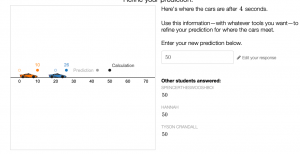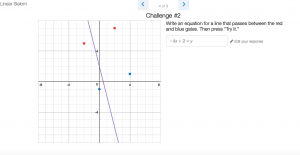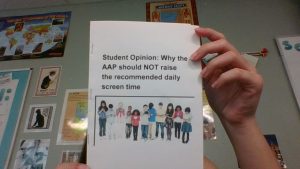In 9th grade Advanced History, we were put into groups and given an Industrialist to research. This was to later create a trial which would determine if they were a captain of industry or a robber baron. Our group was given Andrew Carnegie, a leader in the steel industry. I was given the role of prosecutor, and was tasked with writing an opening statement and questioning witnesses, my script can be found below.
Opening Statement:
Your honor, members of the jury, my name is Livia Kola, and my partner Cadence Ries and I will be prosecuting Andrew Carnegie in this case. Andrew Carnegie, regarded as a captain of industry, a man who has given away his wealth, and known for saying “a man who dies rich dies disgraced.” A man known for being generous, and donating to many different charities did not extend his generosity to his workers. As a boss, he gave them awful working conditions where they had a break of a few minutes and no time to eat as according to PBS. org, which states, “For many the work went without a break; others managed to find a few minutes here and there.” He also often lowered the wages of his workers. He is a man riddled with hypocrisy. The wealth of his company mattered more to him than the livelihood of his workers. Arguments from the defense will try to shift the blame to Mr. Frick and pretend that Mr. Carnegie has no responsibility for the actions that take place in his factory. He is a boss who did not care to pay attention to his workers, or his factory, his negligence and lack of empathy leading to the homestead strike. He is a man who decided breaks and safety were not necessary for his workers, and decent wages were not a given. But most importantly, he is a robber baron.
Steel Worker
What is your relationship with Mr. Carnegie?
It is said that Mr. Carnegie often lowered the wages of his workers, is this true?
Who is Henry Clay Frick?
Mr. Frick was seen as Mr. Carnegie’s right-hand man, is this correct?
What is the reason that you were locked out of the factory?
After you stood outside the factory for while what happened?
These guards were sent by?
Do you feel that Mr. Carnegie made living tougher?
Did the wage cut affect you directly?
Did it make providing for your family harder?
Mr. Frick
Mr. Frick, you were put in charge of Mr. Carnegie’s factory, correct?
And you lowered the wages of the workers, correct?
In what way would this have benefited the workers?
Would Mr. Carnegie have wanted you to do so?
Was this a direct order from Mr. Carnegie?
Why did you lock the workers out of the factory?
Were these orders from Mr. Carnegie?
Why were the guards called in?
Had the workers been violent before?
Are you aware that seven men were killed by these actions?
Would you say any of your actions were because of orders from Mr. Carnegie?
Why do you feel you were assaulted?
Andrew Carnegie
Mr. Carnegie, would you say that you pay your workers a good amount?
Is it true that you often lower their wages?
Moving to the homestead strike, you were not at the factory, correct?
Who did you leave in charge?
Henry Clay Frick, would you describe him as your right-hand man, your most trusted employee?
Since Mr. Frick was left in charge of your factory, are any of his actions are your responsibility?
.
Did you know ahead of time that Mr. Frick was going to order the factory to be closed, and the guards to be called?
What do you think caused the workers to revolt?
Can you give a few examples of these actions?
Do you blame Mr.Frick for this revolt or someone else?
There were ways to communicate with Mr. Frick through telegraphs, correct? Yes.
If this was the case, why did you not check in on Mr. Frick as he led your factory?
How many breaks ( during the day and through the year) did your worker receive?
Closing Statement:
Mr. Carnegie’s generosity through donations to various charities is only a facade to hide the fact that he refused to pay his workers with the money that they deserved and instead lowered his wages. Although he was not there during the homestead strike, he placed Mr. Frick in charge of his company, for which he takes responsibility for. Even though, it had not been his actions that led to the strike, the actions of his so-called right-hand man are greatly his responsibility as he was the one to place Mr. Frick in charge. Andrew Carnegie, a man that would drive his workers to a deadly strike through his low wages is a robber baron.



